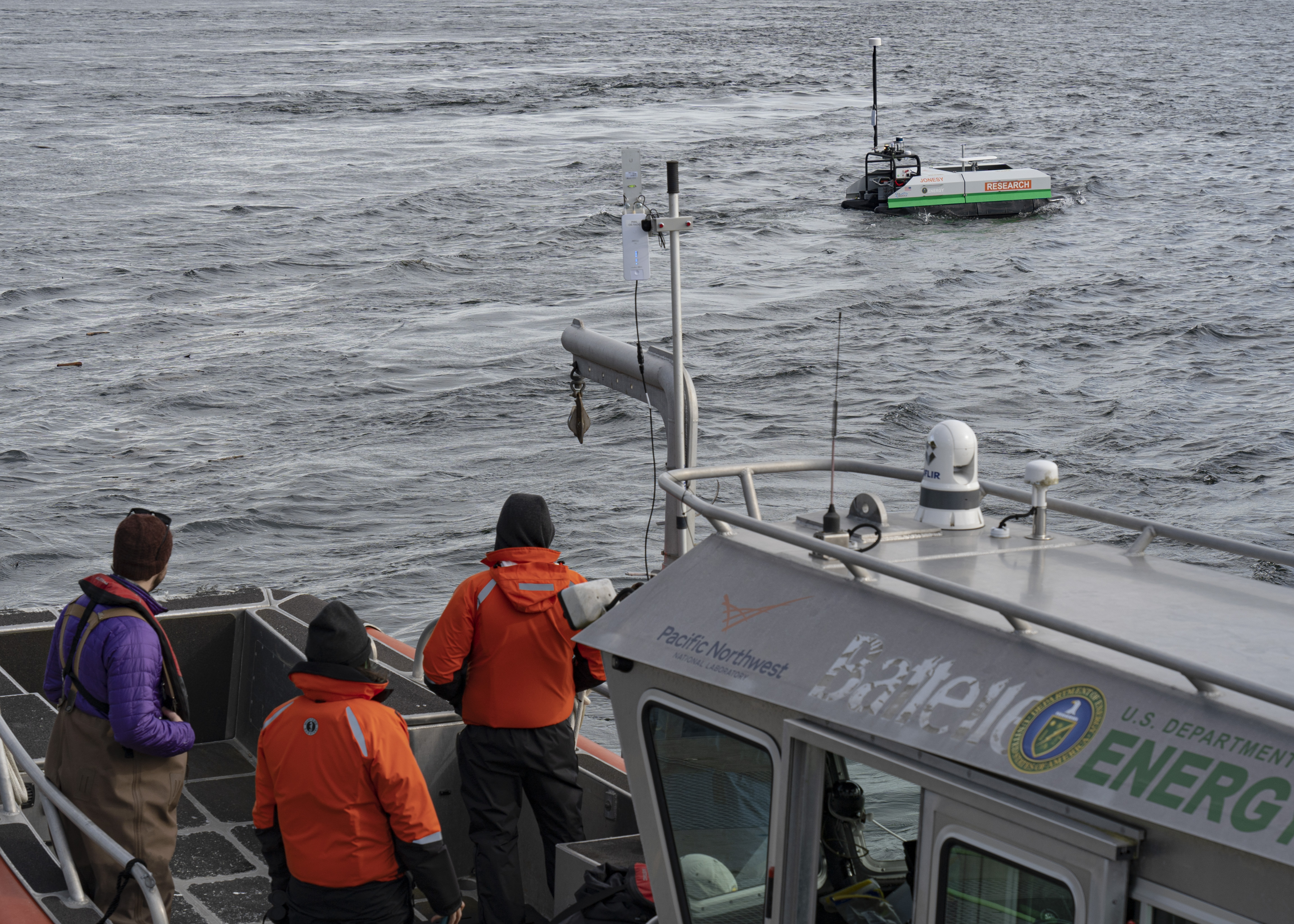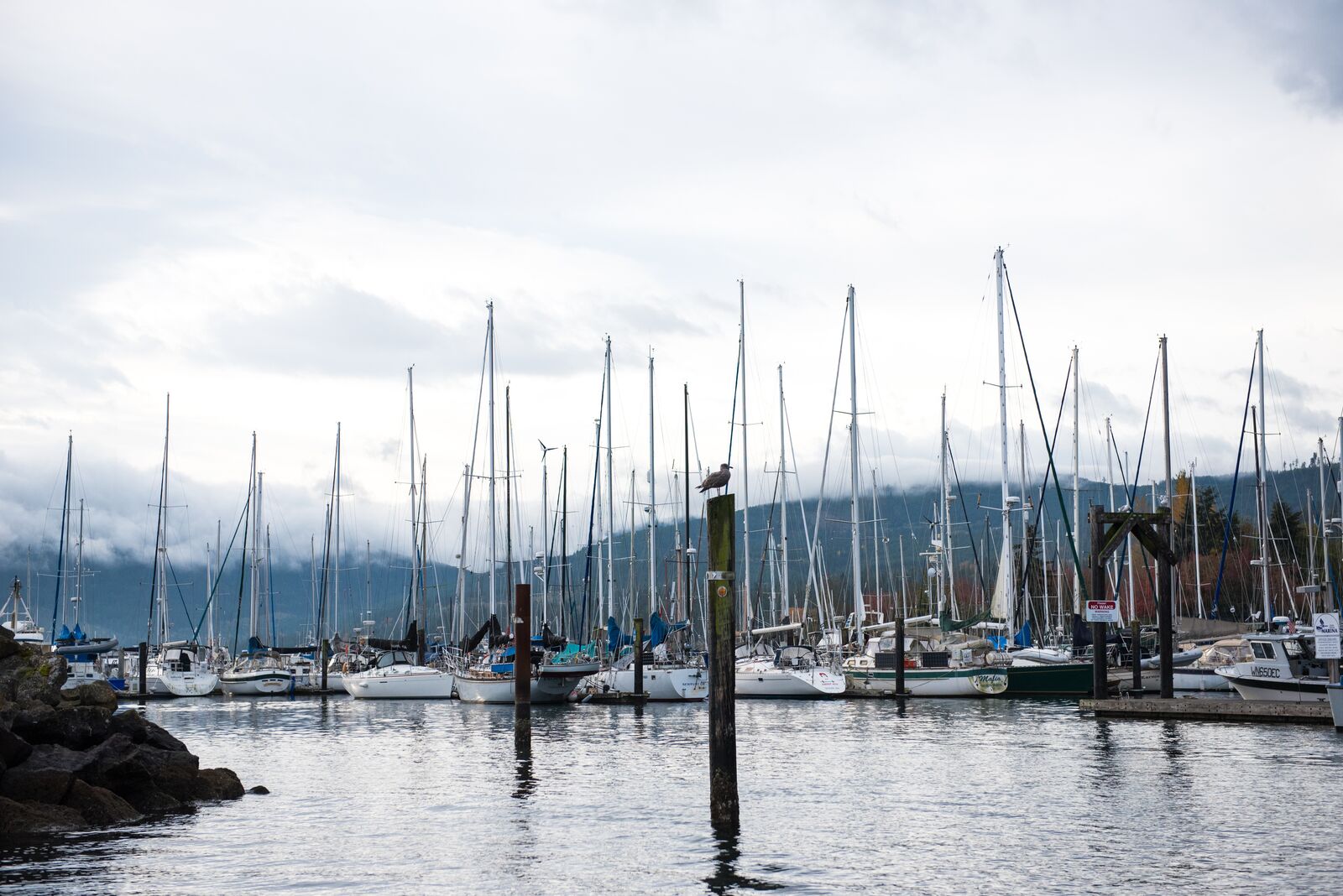
The Blue Economy
The Blue Economy
Advancing the power
of the ocean
Advancing the power
of the ocean
The World Bank, defines the blue economy as “the sustainable use of ocean resources for economic growth, improved livelihoods, and jobs while preserving the health of ocean ecosystems.”
The global blue economy is valued at an estimated $2.5 trillion annually and projected to double in size by 2030, compared to 2010 levels. A thriving blue economy is a national priority that provides economic, social, and environmental benefits from the sustainable use of the ocean and connected waterways. Sectors of the blue economy include maritime transport, oceanographic research, offshore renewable energy, and sustainable seafood.
Powering the blue economy
In 2019, the Department of Energy's (DOE’s) Water Power Technologies Office started the Powering the Blue Economy Initiative to accelerate growth of the blue economy, while creating a diverse set of pathways for the development of marine energy technologies. Pacific Northwest National Laboratory (PNNL) and the National Renewable Energy Laboratory (NREL) are collaborating on this effort, together with university and private sector partners.

To advance this effort, PNNL and NREL identified real-world applications that would benefit from integration with marine energy. These include harnessing ocean energy to power coastal communities, extracting valuable minerals from seawater, recharging underwater vehicles for ocean observations, and providing power for offshore aquaculture facilities.
PNNL and NREL also launched a series of projects to further the growth of the blue economy—including foundational research and development projects, initiatives to assist coastal communities transition to renewable power sources, and prizes to attract researchers and developers with an interest in powering diverse needs at sea and onshore. These projects focus on:
- powering a range of fixed and mobile ocean observation platforms—such as coastal weather buoys and autonomous vehicles—as well as specialized power sources for sensors in extreme environments, such as the Arctic and deep ocean
- desalinizing seawater using wave power
- modeling and developing electronic systems to provide consistent power from intermittent tidal and wave resources
- understanding potential interference to wave and tidal energy sources that power observation platforms
- investigating energy sources at high latitudes and technologies to generate small amounts of power for Arctic observation sensors
- testing novel materials and processes for manufacturing small-scale (< 100 watts) tidal turbines
- drawing energy from temperature and salinity gradients in the ocean to power uncrewed vehicles and sensors
- extracting minerals dissolved in seawater for use in industry
Supporting the blue economy

PNNL is building innovative pathways to new markets for marine energy technologies. Researchers are examining the value of marine energy to complement other renewable energy sources, evaluating conventional and innovative energy storage solutions like compressed hydrogen gas, and exploring the creation of microgrids at sea and in coastal communities to provide clean, consistent, and sustainable power.
PNNL serves as the technical lead for the Ocean Observing Prize. The Ocean Observing Prize is a $3 million collaboration between DOE and the National Oceanic and Atmospheric Administration to stimulate innovation and collaboration between the marine energy- and ocean-observing communities through prizes and research incentives.
In addition, PNNL partners with other public and private organizations to support growth in marine energy and the broader blue economy, such as through its involvement in Washington Maritime Blue. Washington Maritime Blue is a public/private alliance working to make Washington State home to the most sustainable maritime industry by accelerating the shift to renewable power in the maritime industry and supporting coastal communities facing an uncertain climate.
PNNL marine energy experts are engaged in a variety of blue economy efforts across the country and in different sectors, including working with government and industry partners in the defense sector. Using platforms such as autonomous underwater and surface vehicles, gliders, and more, PNNL is helping the Department of Defense and the Department of Homeland Security monitor the ocean for potential threats, including climate change.
PNNL researchers are also collaborating with the National Oceanic and Atmospheric Administration (NOAA) to model, monitor, and test emerging technologies that capture and store carbon dioxide from ocean waters. Called mCDR, these technologies represent an emerging blue economy market focused on reducing concentrations of atmospheric carbon dioxide, while protecting ocean ecosystems from the effects of ocean acidification.
Blue economy research at PNNL-Sequim
Scientists and engineers at PNNL have expertise in key marine development areas, including wave energy, tidal energy, offshore wind, environmental monitoring, biofuels from sustainable feedstocks, seawater mineral extraction, and marine hydrogen fuel production. This expertise, combined with PNNL’s unique facilities and capabilities, allows researchers to discover and develop new ways to use the ocean sustainably and responsibly.
To ensure that marine renewable energy is developed responsibly, PNNL researchers are studying how the blue economy can affect marine mammals and fish. Researchers are evaluating acoustic impacts on marine creatures, the potential for whales and marine mammals to entangle in mooring lines, and the impact of tidal power turbine blade strikes on marine mammals and fish.
PNNL serves as a hub for blue economy innovation, where government, industry, and university partnerships can advance ocean technologies.

